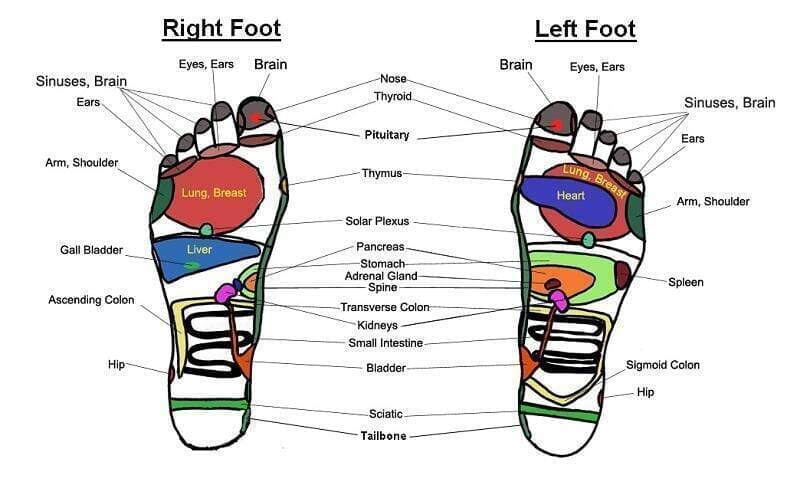7 Steps to Embrace Eco-friendly Living | Herbal Goodness
The literal meaning of the term eco-friendly is not lost on any of us. By and large, the goal is to create habits and go about your lifestyle in a way that favors the environment and is in line with the earth’s natural ecology. It is a way of being really; making the personal decision to live consciously with an appreciation and respect towards our beloved planet.
An eco-friendly lifestyle involves reducing your carbon footprint by opting for alternatives in various facets of life: eating habits, energy consumption, products you use, type of transportation and so on and so forth.
It’s not as easy as it may sound, and to be fair, most folks the world over have enough challenges to contend with. Of course, those in developed countries have it easier in terms of standards of living, but this is not to mean that the human challenges that are raising a family, hitting the daily grind, and leading a responsible lifestyle are a Sunday picnic.
But the mistake many people make when trying to go green is trying to shoot for its top-tier. In so doing, they end up losing heart and abandoning it altogether.
Look, it’s a herculean task trying to adopt an eco-friendly lifestyle in one go, and anyone who tells you otherwise is misleading.
The secret to successful eco-friendly living is to approach it gradually, biting the much you can chew. Below we share seven easy practical steps you can start taking today to minimize your impact on the environment.
Related: Staying Healthy This Halloween
7 Steps to Embrace Eco-friendly Living
Step 1: Recycle
This is perhaps one of the easiest things you can do in your quest for a greener world.
Start with the assumption that everything you use can be recycled, be it paper, plastic, batteries, bulbs, electronics and aluminum. Next, do an online research to establish if there is a local disposal company where you can send the recyclable assets – or if you can send it anywhere else for that matter.
Finally, start collecting your trash in a clean, dry place before sending it off for recycling.
Related: 10 Healthy Christmas Recipes
Step 2: Rethink your Waste
We have been conditioned to ignore our waste materials, not paying much attention to whatever place it ends up in. However, it’s not too late to be mindful of our waste and taking the necessary measures to reduce it.
A good way to get you started would be, when sorting out the trash one night, to rethink every item you are disposing and ask yourself if there was a way to recycle each item as opposed to replenishing the supplies every time.
Check if there are any recycling programs in your community and follow them.
As for kitchen scraps, they can always be useful in the garden – food scraps, fruit and vegetable leftovers, tea bags, egg shells, all these can be great for gardening and landscaping.
Step 3: Conserve Energy
There are many ways you can cut down on your power consumption and minimize your carbon footprint in the process.
You can upgrade your appliances to Energy Star products. You can make it a habit of turning off electronics that are not in use – this applies to power strips as much as it does computers left in the charge and a TV set switched off with the remote. Upgrade your bulbs to compact fluorescents which are more energy efficient, and when not in use, don’t forget to switch off the lights.
Additionally, consider solar power alternatives as this is one of the most effective ways you can reduce energy consumption.
Step 4: Get Rid of the Chemicals
Chemicals are everywhere you look – from body sprays, to air fresheners, to conventional cleaning products and a host of other products we cannot begin to list.
However much we may find them useful, many of these chemicals are just but air pollutants to the environment and serve to disrupt the ecosystem.
Ditch the ones you can – and if you can as well do without, props to you!
Step 5: Seek Greener Alternatives
There is bound to be a greener alternative for most of the things we use every day. Your job is to seek these eco-friendly options and replace the conventional products with them.
For example, you can opt for toxic-free cleaners in place of products laden with unreadable chemicals. You can also opt for organic food produce in favor of over-processed grub – it’s healthier for you after all, isn’t it?
While you are at it, train yourself to use less disposable items in your everyday life – carry coffee in a travel mug instead when you hit your favorite coffee den. Carry reusable bags whenever you’re going shopping. If you can, buy items like household cleaning products in bulk to reduce the amount of packaged products you purchase.
Step 6: Opt for Electronic Bills
You would be surprised just how much unnecessary paper the average person uses up in a year. Seriously – look it up. The fact is though, a lot of it can be avoided – whether we are talking shopping receipts, paper bills, credit card statements et cetera.
Most of these are available in electronic form. For others like ATM cash withdrawals and shopping receipts, you can always opt against. Whenever you can, opt for paperless. Otherwise, eco-friendly paper is eco-sustainable too as it contains a higher amount of recycled materials and chlorine is not used in its whitening.
Step 7: Eat Organic
In the western world, conventional diet is the staple. However, in the last few years, the organic lifestyle has really been gathering steam, and for good reason: health-wise, its benefits are immense.
Organic products tend to be a little costlier, but if you can swing it, you will be settling for the better option no doubt.
But careful how you approach the organic lifestyle. Start slowly as opposed to going all in if you don’t want to fall by the wayside. You can start with staples such as fruits and vegetables, eggs, honey and meat purchased from the farmers market. Here is a list of healthiest items you can purchase from the farmers market.
These are just a few simple steps to weaning your way into a more eco-friendly lifestyle. As we stated earlier, easy does it. No single person or family can change the world single-handedly, but our collective efforts can go some way in doing just that. Make it easy on yourself and best of all – enjoy the ride!
What ideas for engaging in eco-friendly living are you currently putting into practice?
Read More: 7 Ways to Eat Organic Without Hurting Your Budget
Herbal Goodness: Our Journey to Empower Wellness Naturally
Gaia: The Earth Goddess and Her Connection to Herbs and Superfoods










